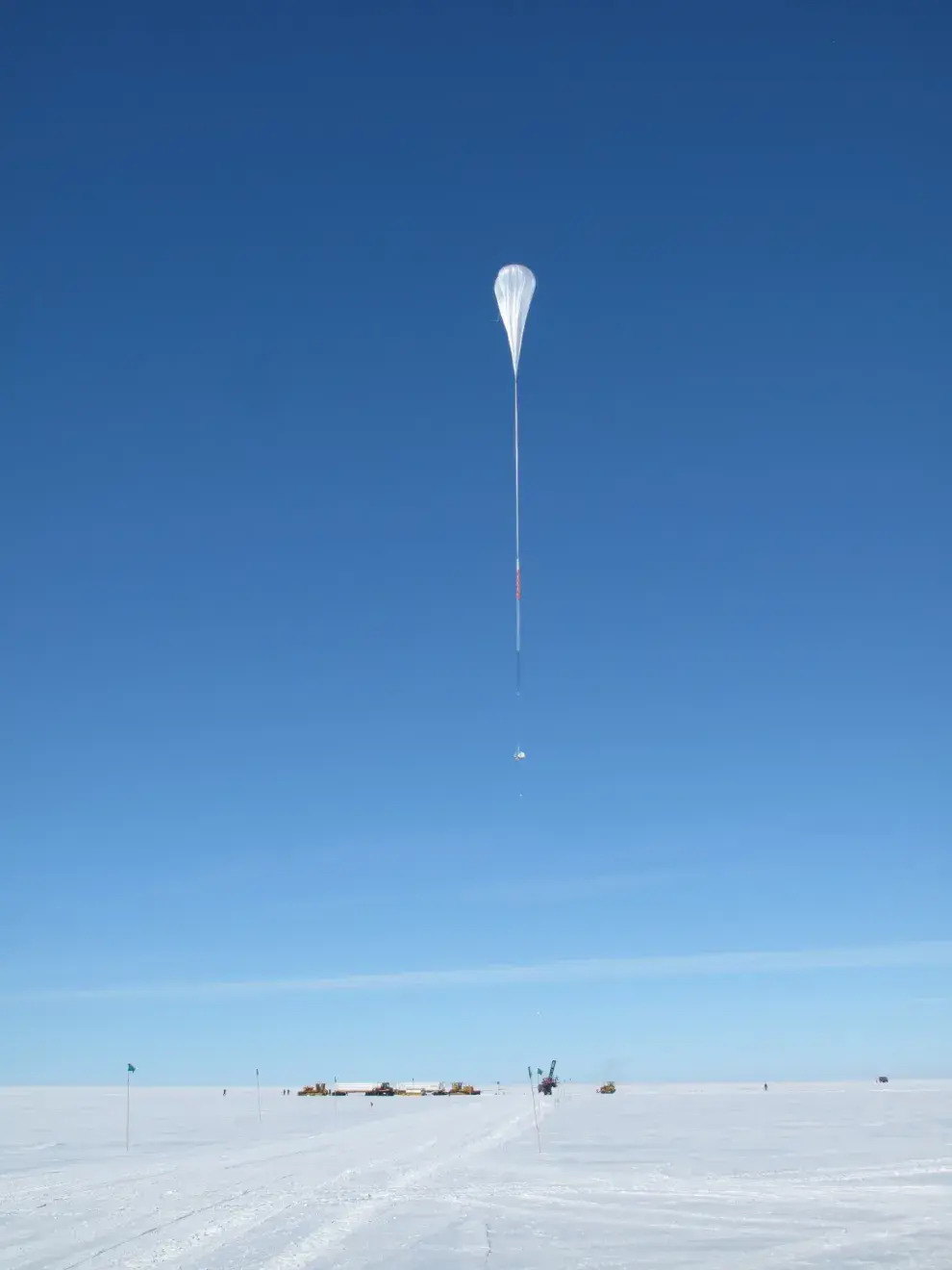Updates
July 15, 2024
While the flight ended on June 3rd, the recovery crews reached the site only about a week ago due to the location's remoteness. Dr. Park's group met with Indigenous Peoples around Ellesmere Island in reflection of the HELIX's landing there. She and her team are demonstrating leadership in their field by asking some hard questions around research design, Indigenization, and respect for Indigenous Peoples in research.
June 12, 2024
News originally published on May 22, 2024
 Photo credit: Nahee Park. The balloon, carrying Indiana University's Cosmic Ray Electron Synchrotron Telescope (CREST), was launched on December 25, 2011.
Photo credit: Nahee Park. The balloon, carrying Indiana University's Cosmic Ray Electron Synchrotron Telescope (CREST), was launched on December 25, 2011.Dr. Nahee Park travelled to Sweden for yet another exciting experiment, supporting the launch of a balloon that will carry a cosmic ray detector to the upper limits of the atmosphere, nearly 40 kilometres above the ground. The HELIX experiment, led by the University of Chicago and developed in collaboration with other universities in the US, Japan, and Canada, including Queen’s, will inflate a helium balloon of approximately 40 million cubic feet – a football field could fit inside it! – to lift a one tonne detector measuring 1.6m x 1.6m x 2.3m. After launch from the Esrange Space Center, the balloon is expected to fly from five to seven days over the Atlantic Ocean before landing in Canada.
 Queen's 2015 Nobel Prize in Physics
Queen's 2015 Nobel Prize in Physics